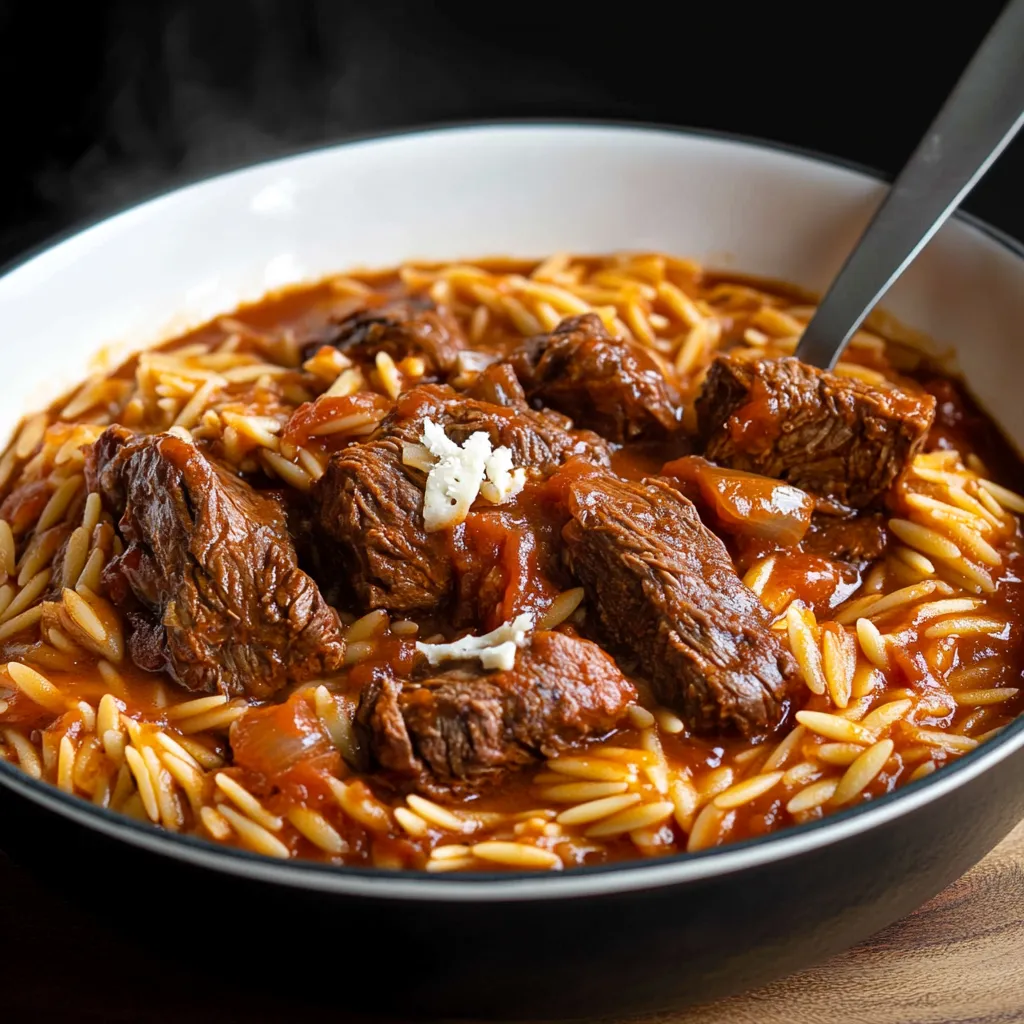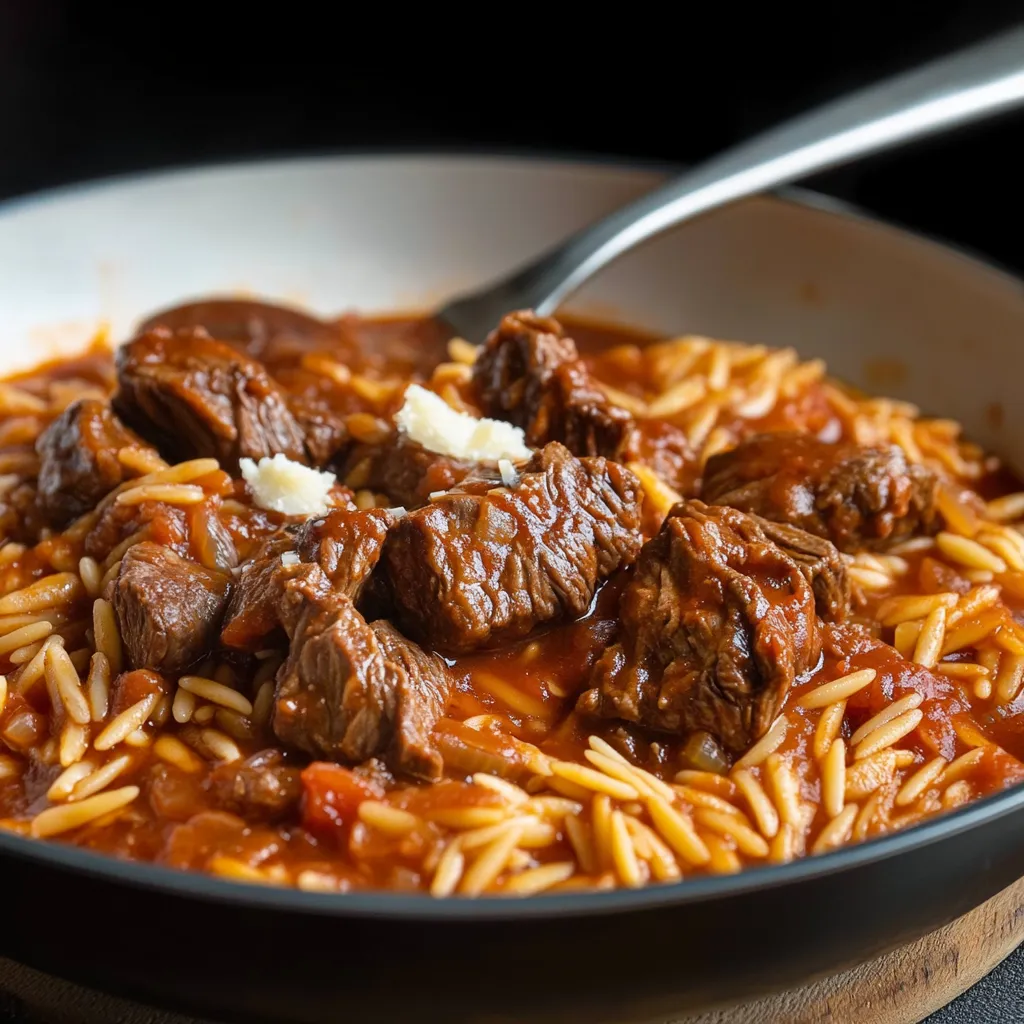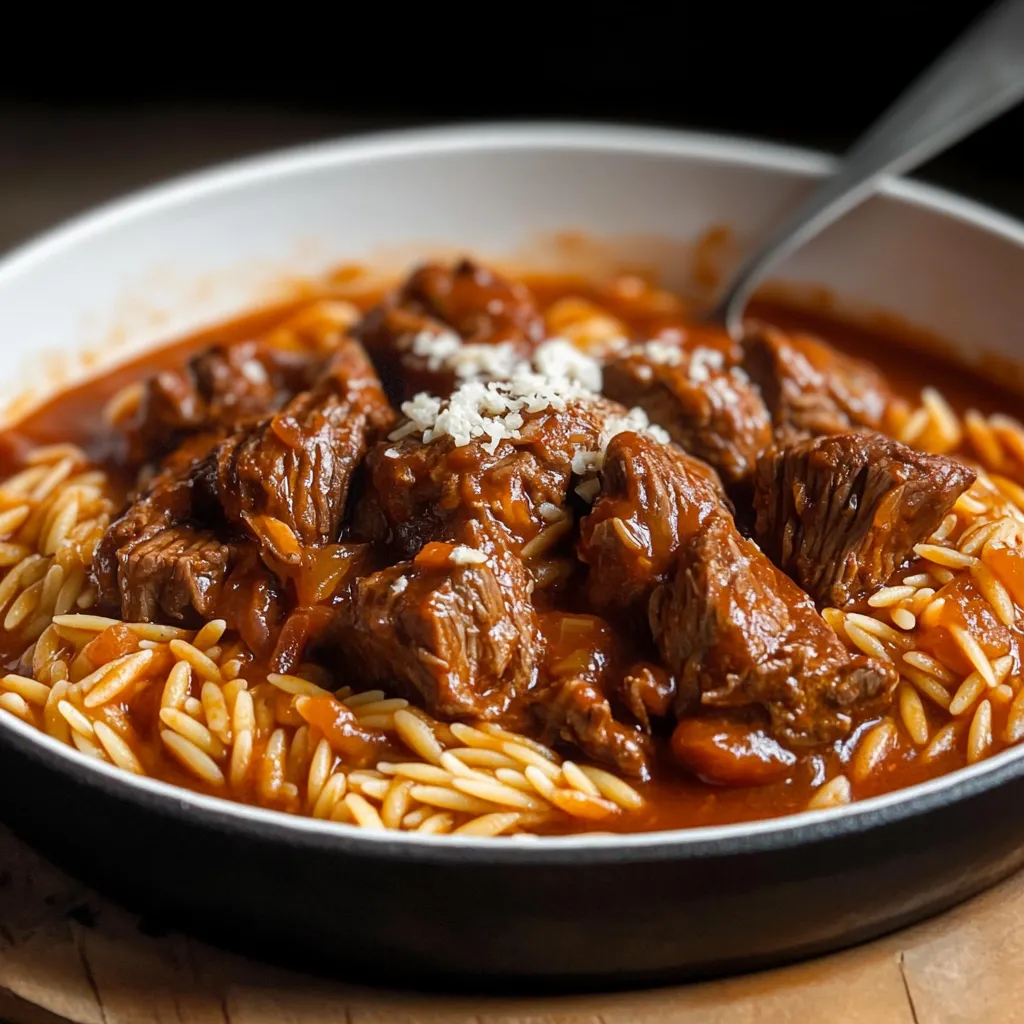 Pin it
Pin it
Beef Giouvetsi has become my go-to dish for comforting family Sundays and cozy evenings alike. It takes humble ingredients and transforms them into a savory Mediterranean casserole with meltingly tender beef, silky orzo pasta, and a deeply spiced tomato sauce that fills the kitchen with warmth.
The first time I made Beef Giouvetsi was for a special family gathering. The aroma brought everyone straight to the table before I even called them and now it has a permanent place in our line-up for crowd-pleasers.
Ingredients
- Beef chuck or flatiron steak: Choose well-marbled cuts for best tenderness and rich flavor
- Ground allspice: Brings a subtle, warming background note that balances the tomato
- Salt and pepper: Essential to bring out the flavors in the meat and sauce
- Nutmeg: Just a pinch for a sweet spice undertone
- Olive oil: Extra-virgin for the most robust flavor and silky sautéing
- Red onion: Gives gentle sweetness and depth. Look for firm onions without blemishes
- Tomato paste: Intensifies the savory base. Opt for double concentrate if available
- Red wine: Adds acidity and rounds out the sauce. Use one you would drink
- Whole peeled canned tomatoes: For consistent flavor or ripe fresh tomatoes at peak season
- Beef or vegetable stock: Boosts savoriness. Choose low sodium for control
- Sweet paprika: For color and gentle warmth
- Dried bay leaves: Infuse a background note and make the sauce taste complete
- Orzo pasta: The classic for Giouvetsi. Choose high-quality durum wheat if possible
- Optional grated Kefalotyri cheese: For creamy saltiness. You could sub with pecorino
Step-by-Step Instructions
- Prep the Tomatoes:
- Blend your canned tomatoes until smooth for a velvety sauce. If using fresh tomatoes, remove stems before blending
- Season and Prep the Beef:
- Pat your beef cubes very dry this is key for browning. Rub with salt, pepper, allspice, and nutmeg until evenly coated
- Brown the Beef:
- Heat olive oil in a heavy pan over medium-high. Add seasoned beef in batches to avoid crowding. Brown all sides deeply which adds tremendous flavor and depth
- Cook the Aromatics:
- Lower heat to medium. Stir in minced onion. Stir with a wooden spoon and scrape the bottom for flavor bits. Cook one minute to soften but not color the onions
- Caramelize the Tomato Paste:
- Add tomato paste and cook, stirring constantly, until it smells sweet and darkens in color. This takes about one to two minutes and develops umami
- Deglaze with Wine:
- Pour in the red wine. Scrape the bottom to lift any browned bits. Bubble for a minute to cook off the alcohol and mellow the acidity
- Build the Sauce:
- Stir in the pureed tomatoes followed by stock boiling water bay leaves and paprika. Once it starts to simmer cover tightly with a lid and lower the heat
- Long Simmer for Tender Meat:
- Cook slowly for about one hour or until beef yields easily to a fork. This gentle simmer creates melting texture and deep flavor
- Add Orzo and Finish:
- Pour in two more cups of boiling water then season and add the orzo. Cover and cook another 20 minutes stirring so the pasta does not catch and stick
- Final Texture and Serve:
- If orzo is underdone add a splash more water cover and rest for a few minutes. Serve immediately with grated cheese for an unforgettable finish
 Pin it
Pin it
I have a true soft spot for the sweet-salty bite of Kefalotyri cheese in each mouthful. My grandmother always insisted on using this cheese and that little touch made all the difference at our holiday table.
Storage tips
Beef Giouvetsi keeps well in the fridge for up to four days. Reheat gently with an extra splash of water or stock so the orzo stays creamy. It freezes well too just store in airtight containers and thaw overnight in the fridge before reheating.
Ingredient substitutions
No Kefalotyri? Go with Pecorino Romano or even Parmigiano. For beef, lamb shoulder makes a lovely variation. If you are out of red wine, a splash of balsamic vinegar and more stock will round out the sauce.
Serving suggestions
I love to serve Giouvetsi straight from the pot with a crisp Greek salad and plenty of rustic bread to mop up the gorgeous sauce. Leftovers are great for lunches and taste even better the next day.
Cultural notes
Giouvetsi is deeply woven into Greek Sunday traditions where it is often baked in clay pots for special gatherings and holidays. Every family has a secret twist whether in the combination of spices or the type of cheese on top.
 Pin it
Pin it
I learned these steps after a few trial runs and now Giouvetsi always comes out silky and full of flavor from top to bottom. The most important lesson I discovered is to be patient with the simmering. That long slow bubble unlocks all the magic.
Frequently Asked Questions
- → What cut of beef works best for Giouvetsi?
Chuck, chuck roll, or flatiron cuts are ideal as they become tender during braising yet maintain rich flavor.
- → Can fresh tomatoes be used instead of canned?
Yes, simply remove the stems and blend fresh tomatoes until smooth before adding to the pot.
- → What cheese pairs well as a topping?
Kefalotyri is a traditional choice for serving, offering a salty and tangy accent to the dish.
- → Why add orzo pasta at the end?
Stirring in the orzo later ensures the pasta cooks evenly and absorbs flavorful broth without becoming mushy.
- → How do you prevent the orzo from sticking?
Stir the orzo occasionally while it simmers and add a splash of hot water if needed to keep the texture loose.
